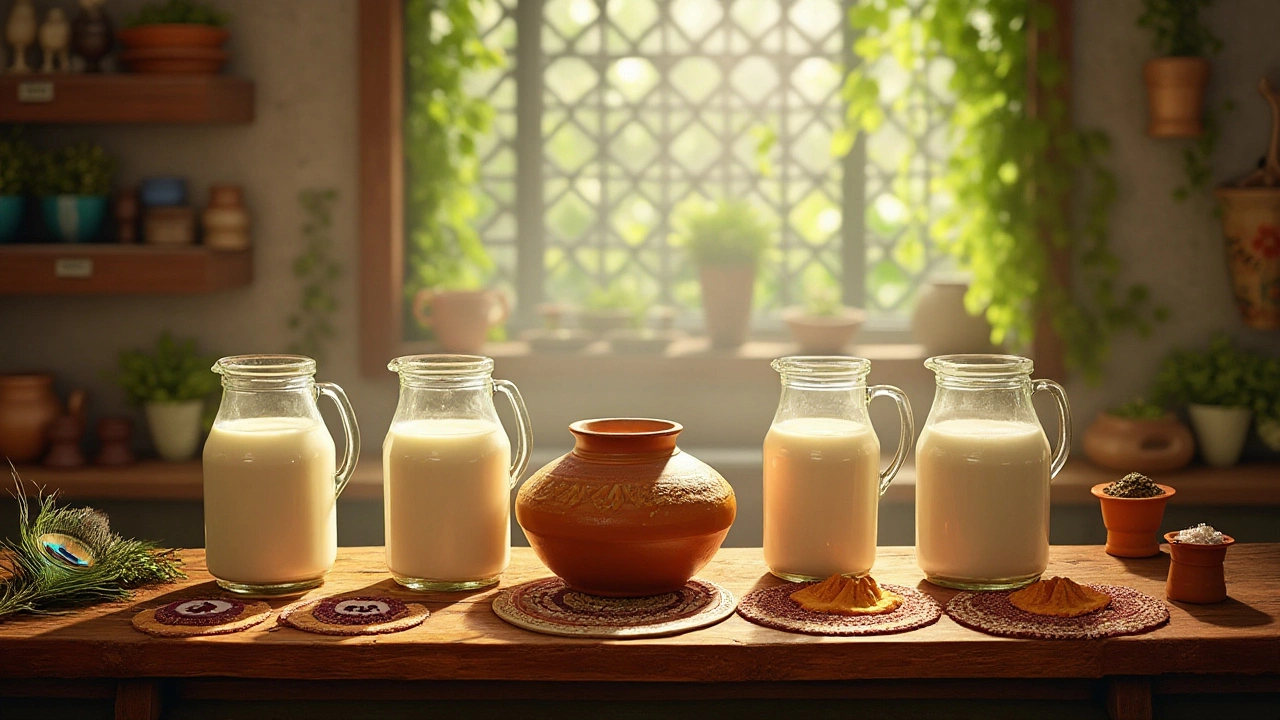Milk Varieties – What’s Inside and When to Use Them
Ever wonder why recipes call for whole milk in one spot and almond milk in another? The answer lies in the unique texture, flavor, and nutrition each milk brings. Knowing the basics helps you choose the right one without guessing.
Common Milk Types and Their Benefits
Whole milk is the classic dairy option. With about 3.5% fat, it adds richness to sauces, soups, and baked goods. It also supplies calcium, vitamin D, and protein that support bone health.
Skim or low‑fat milk drops the fat to 0–2%. It works well in smoothies or cereal when you want the dairy boost without extra calories. The protein stays, but the mouthfeel is thinner.
Buffalo milk is popular in South Asia. It’s creamier than cow’s milk because of higher fat (around 7%). It makes silk‑smooth paneer and thick desserts like rasgulla.
Goat milk has a slightly tangy taste and smaller fat globules, which some people find easier to digest. It’s great for lassi, cheese, or anyone with a mild cow‑milk sensitivity.
Plant‑based milks – almond, soy, oat, coconut, and rice – each bring a distinct vibe. Almond milk is low in calories, soy milk offers comparable protein to dairy, oat milk gives a creamy texture perfect for coffee, and coconut milk adds tropical sweetness to curries.
Choosing the Right Milk for Your Recipes
When a dish needs thickening, reach for whole milk, buffalo milk, or coconut milk. Their higher fat content coats ingredients and prevents curdling in hot sauces.
If you’re aiming for a light feel, like in a summer smoothie or a low‑calorie soup, skim milk or almond milk does the trick without sacrificing too much flavor.
For high‑protein needs – think post‑workout shakes or protein‑rich desserts – soy milk or goat milk can bridge the gap left by low‑fat cow milk.
Cooking with plant milks can be a bit tricky. Coconut milk can separate if boiled rapidly, so bring it to a gentle simmer. Oat milk may thicken quickly, so add it toward the end of cooking to keep the texture smooth.
Storage matters too. Dairy milks last about a week after opening if kept cold, while most plant milks stay good for 7‑10 days. Always give them a sniff before using – a sour smell means it’s time to toss.
In the end, the best milk is the one that fits your taste, diet, and the dish you’re making. Experiment with small swaps: replace half the cream in a pasta sauce with almond milk, or use goat milk instead of cow milk in a creamy soup. You’ll quickly learn which varieties shine in each kitchen scenario.
Discovering Traditional Milk Varieties and Recipes in India
In India, milk has been an essential part of daily life for centuries, where it is consumed in various forms and cherished for its versatility. From the beloved cow and buffalo milk to the lesser-known camel and goat milk, each type brings a unique flavor and health benefits to the table. This article delves into the diverse kinds of milk consumed across the country and explores popular Indian recipes that utilize these traditional dairy delights. Learn about the cultural significance of milk and get inspired by easy-to-make recipes that highlight its rich taste and nutritional value.
